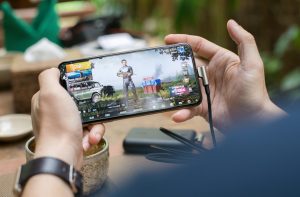Top Features to Look for in Podcasting Equipment
Podcasting has become one of the most popular forms of media in recent years, and for good reason. It provides a platform for people to express their thoughts, share knowledge and engage with their audience in a more intimate way. Whether you’re a seasoned podcaster or just starting out, having the right equipment is crucial to creating a high-quality, professional-sounding podcast. With so many options to choose from, how do you know which podcasting equipment is the best fit for you? In this article, we’ll explore the top features to look for in podcasting equipment that will help take your podcast to the next level.
Microphones
A good microphone is the heart and soul of a podcast. It’s important to invest in a high-quality microphone to ensure clear and crisp audio. When looking for a microphone, there are a few key features to consider.
Cardioid Polar Pattern
The first feature to look for in a microphone is the cardioid polar pattern. This type of microphone is designed to pick up sound from the front and reject sound from the sides and back. This is especially important if you’re recording in a noisy environment as it will help eliminate unwanted background noise.
Condenser vs Dynamic
In general, there are two types of microphones to choose from: condenser and dynamic. Condenser microphones are more sensitive and capture a fuller range of frequencies, making them ideal for recording vocals and music. Dynamic microphones, on the other hand, are less sensitive and are better suited for recording loud noises or multiple people speaking at once. Ultimately, the type of microphone you choose will depend on the content of your podcast.
Headphones
When recording a podcast, it’s important to be able to hear yourself and your guest clearly. This is where a good pair of headphones comes in. Look for headphones that are specifically designed for monitoring audio, as they will provide a more accurate representation of what your audience will hear.
Comfort
Since you’ll be wearing headphones for extended periods of time, it’s important to choose a pair that is comfortable. Look for headphones with soft ear cushions and an adjustable headband to ensure a comfortable fit. Additionally, choose headphones that are lightweight and easy to wear for long periods of time.
Wireless Capability
Wireless headphones offer the convenience of being able to move freely while recording. This is especially important if you have multiple guests or if you record in a small space. Look for headphones that have a long battery life and a strong wireless connection to ensure uninterrupted recording sessions.
Audio Interface
An audio interface is essentially the connection between your microphone and computer. It’s responsible for capturing and converting analog audio signals into digital signals. When looking for an audio interface, there are a few key features to consider.
High-Quality Preamp
The preamp is responsible for amplifying the signal from your microphone. Look for an audio interface with a high-quality preamp as it will produce a cleaner and more accurate recording. This is especially important if you’re using a condenser microphone.
Number of Inputs
The number of inputs on an audio interface will determine how many microphones you can connect at once. If you plan on having multiple guests on your podcast, make sure to choose an audio interface with enough inputs to accommodate everyone.
Recording Software
The final piece of the puzzle is recording software. This is where you’ll edit and produce your podcast episodes. There are many different software options available, but the key features to look for are ease of use and compatibility with your equipment.
Editing Tools
Look for recording software that has a wide range of editing tools, such as noise reduction, equalization, and effects. These tools will help you enhance the sound quality of your podcast and make it more engaging for your listeners.
Compatibility
Make sure to choose recording software that is compatible with your equipment. Some software is only compatible with certain audio interfaces or microphones, so be sure to do your research before making a purchase.
In conclusion, having the right equipment is essential to creating a successful podcast. When looking for podcasting equipment, be sure to consider the cardioid polar pattern in microphones, the comfort and wireless capability of headphones, the preamp and number of inputs in an audio interface, and the editing tools and compatibility of recording software. With these top features in mind, you’ll be well on your way to producing high-quality, professional-sounding podcasts that will captivate and engage your audience.











